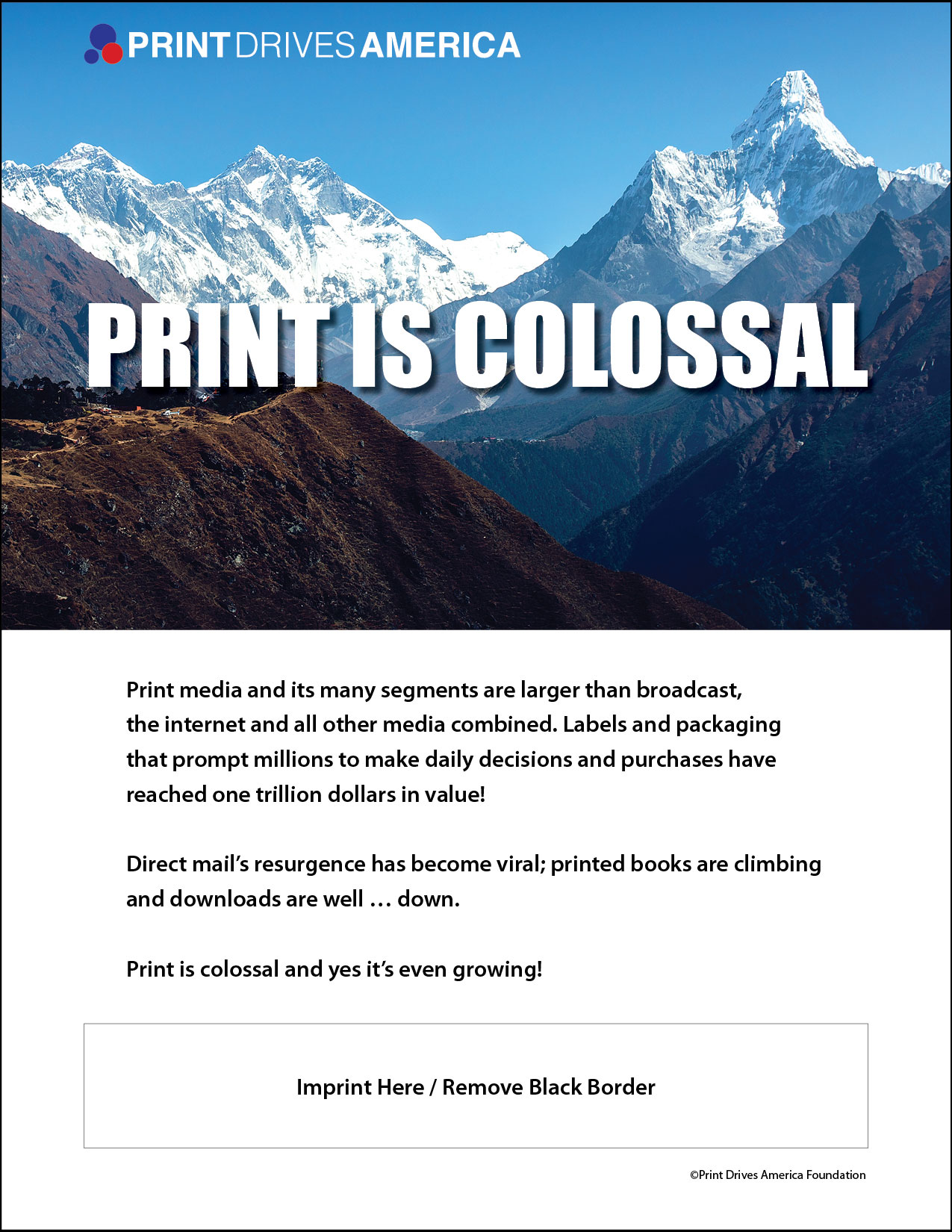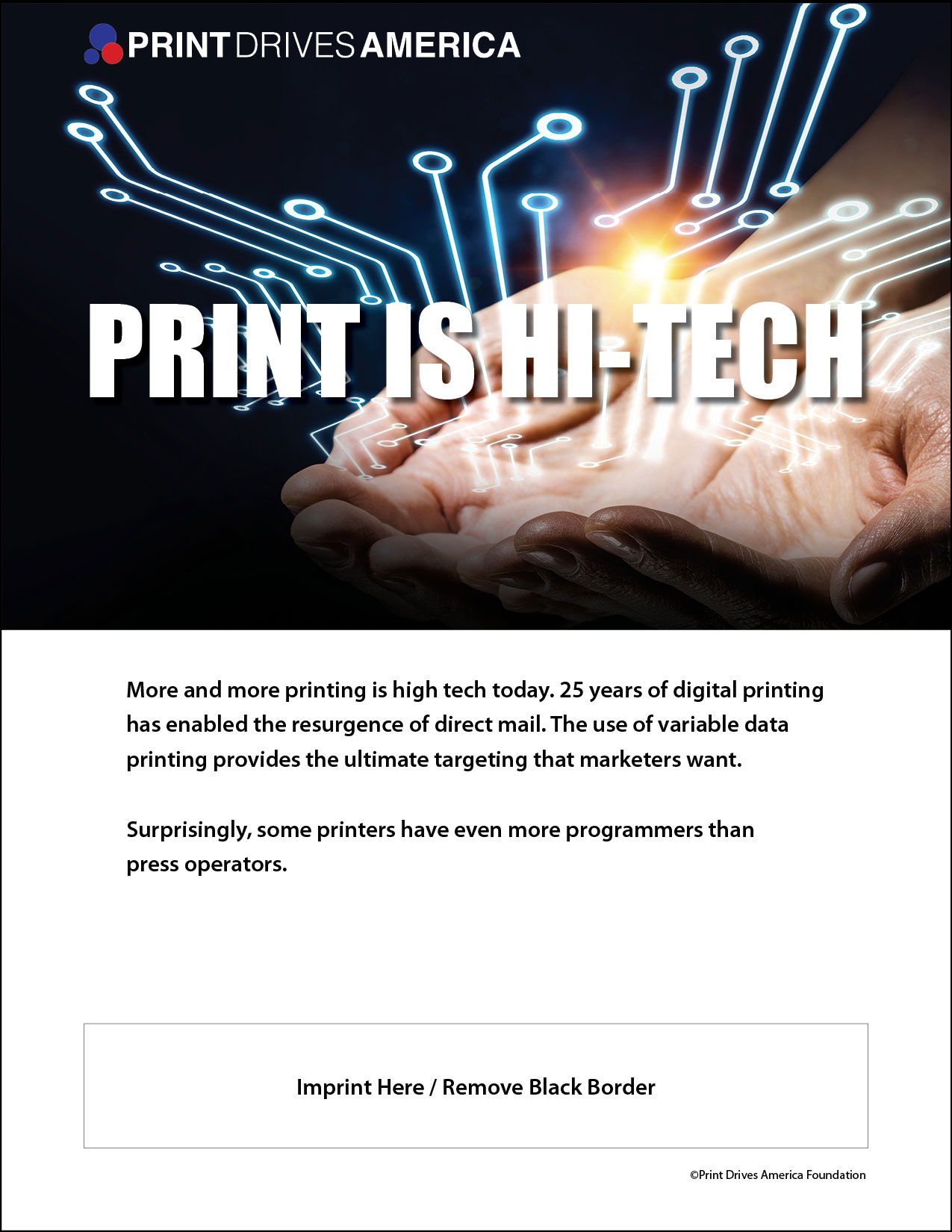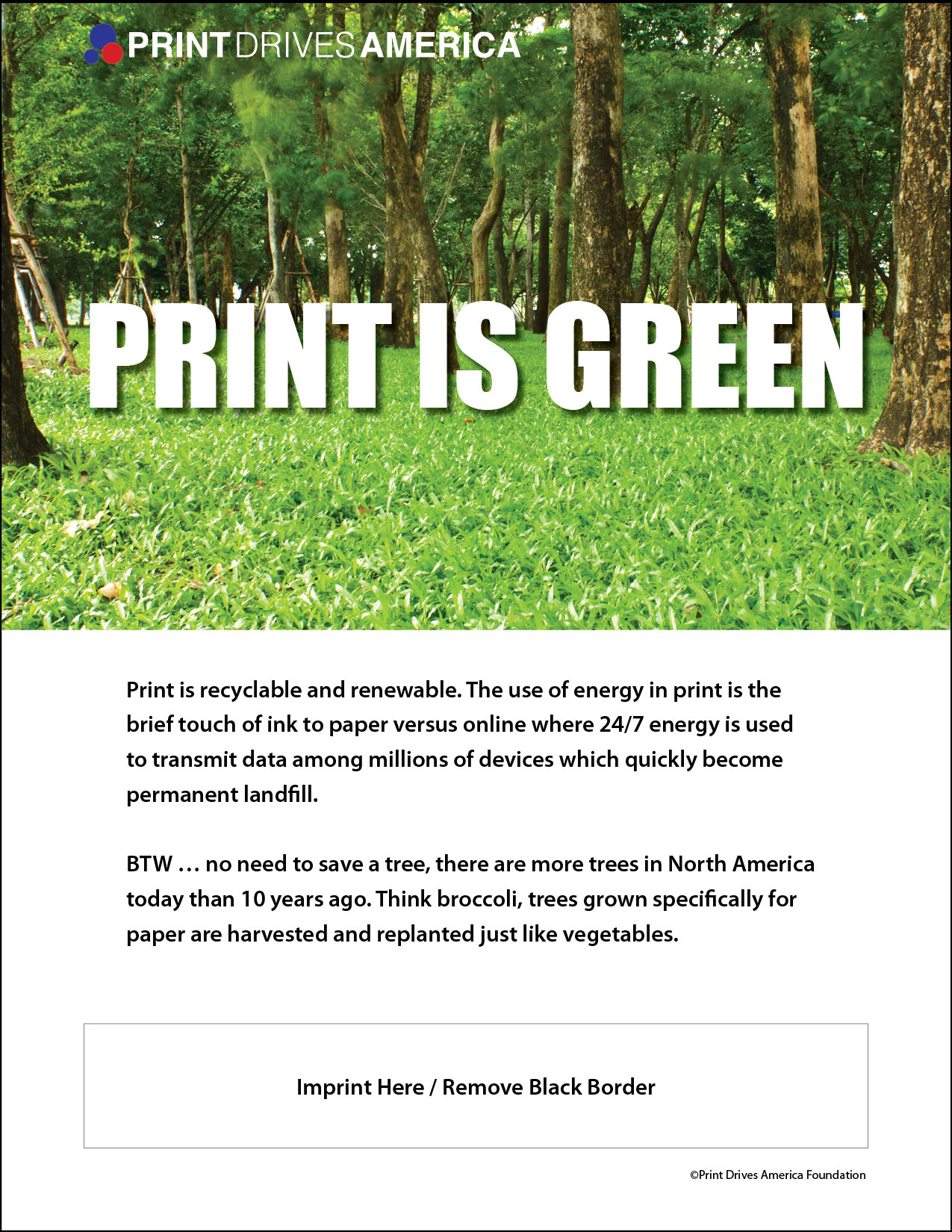The Print industry is environmentally conscious. Using a printed product such as a book, while it has a larger one-time carbon footprint, its overall carbon footprint is much smaller than the e-book or tablet that is powered up everyday. To put it in perspective — if you were to burn four CD’s, that would have the equivalent carbon footprint as a 100 page, full color book.
Everyday the Print Industry is making strides toward becoming even more environmentally friendly. Digital Printing, for example, emits little to no VOCs and almost any waste created by a digital printing press can be reused in the digital printing process.
Additionally, while 58 percent of the harvested trees are used for energy, only 11 percent of those trees are used to create paper.
Trees are actually grown as a crop — just like corn, wheat or any other product that can be grown and sold. Once it’s harvested, the farmers replant the trees. If people did not use trees in the same or similar quantities as they are today, the people who grow, harvest and replant the trees would cease to have a business. Without mentioning the implied economic facts, the environmental issue here is that there would still be some need for trees and instead of going to the tree farms, they’ll be headed to forests.
Also, to make any product, energy is going to be used, but the print industry uses about two-thirds recycled material to create the energy needed to produce paper. Most businesses in the U.S. only use about 10 percent recycled energy. Finally, paper is a renewable resource. Unlike computers and other digital resources, paper can be recycled and reused.
Timothy Freeman
President
Print & Graphic Communications Association




